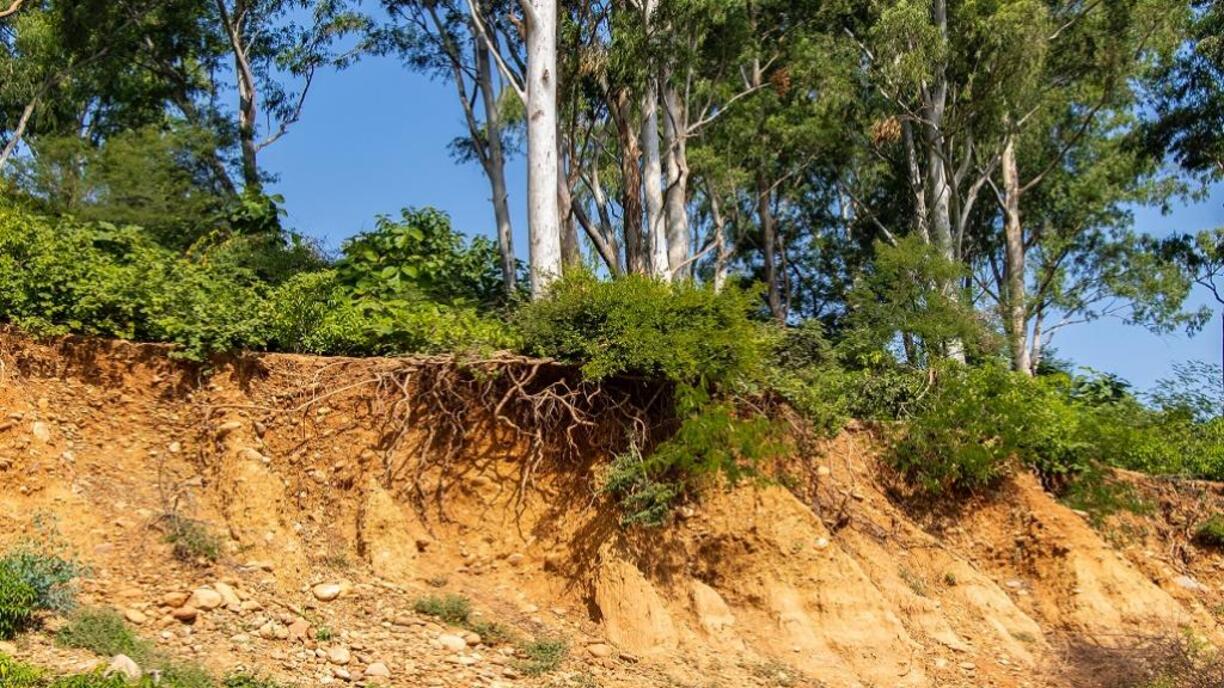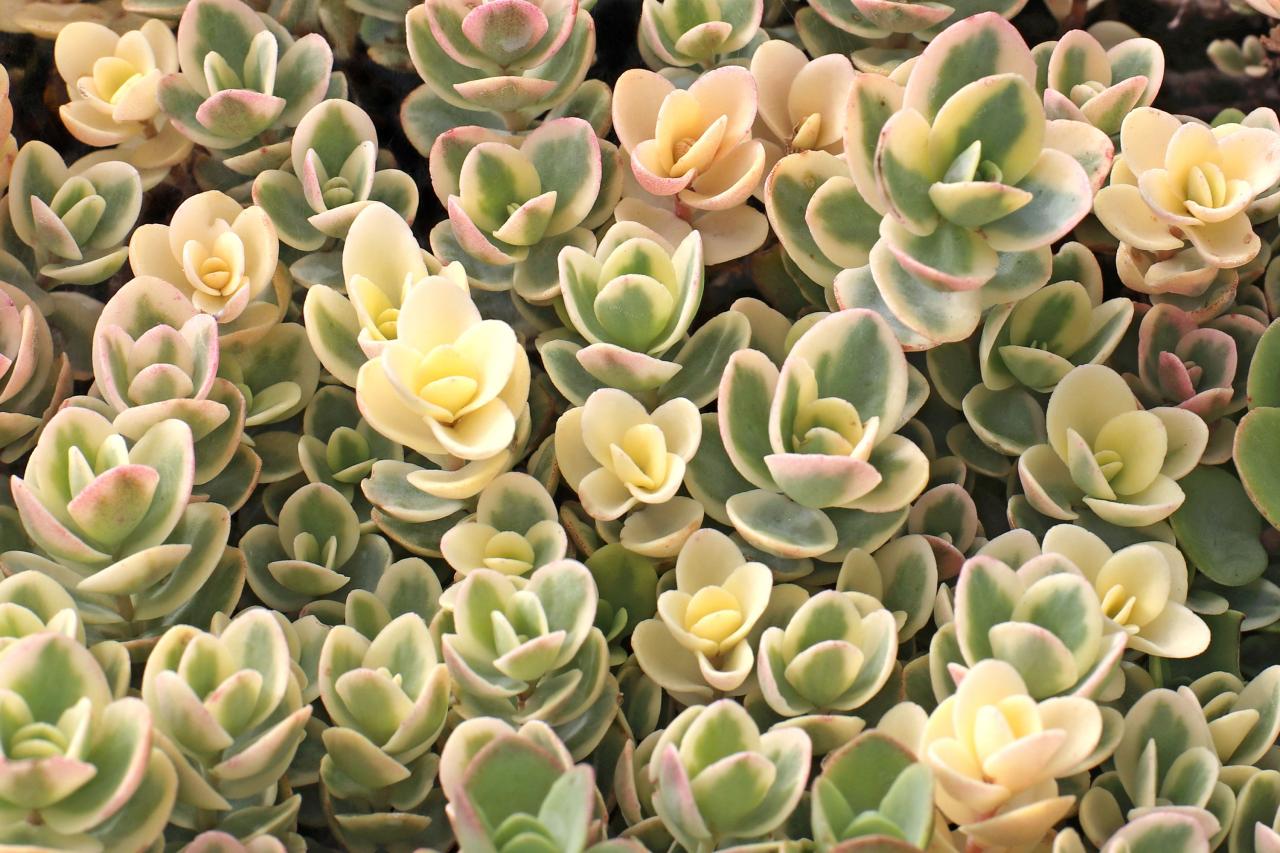Home>Gardening News and Trends>Latest News>Insects Can Cause Costly Damage To Which Of The Following In Museums?


Latest News
Insects Can Cause Costly Damage To Which Of The Following In Museums?
Modified: January 22, 2024
Insects can cause costly damage to the latest news in museums. Protect your exhibits from infestations and safeguard valuable artifacts.
(Many of the links in this article redirect to a specific reviewed product. Your purchase of these products through affiliate links helps to generate commission for Chicagolandgardening.com, at no extra cost. Learn more)
Table of Contents
Introduction
Welcome to the fascinating world of museum collections! Museums are renowned for their valuable and diverse collections, housing artifacts and artworks from different eras and cultures. However, these treasures are not only subject to the passage of time but also face threats from a rather unexpected source – insects.
Insects have the ability to cause extensive damage to museum collections, costing institutions significant amounts of time, effort, and resources. These tiny creatures can silently infiltrate museum storage areas, exhibition spaces, and even the artworks themselves, wreaking havoc on delicate materials.
Understanding the impact insects can have on museum collections is crucial for curators, conservators, and museum staff. By recognizing the risks, identifying vulnerable materials, and implementing preventive measures, we can work together to protect these precious artifacts for future generations.
This article will delve into the world of insects in museum settings, exploring the types of damage they can cause, the vulnerable materials at risk, common insects encountered, prevention and control methods, and the treatment and restoration of insect-damaged objects. By gaining insight into these topics, we can appreciate the ongoing efforts required to preserve and maintain museum collections.
Insects and Museum Collections
Insects have a long history of infesting and damaging museum collections, posing a significant threat to the preservation of delicate artifacts and artworks. The warm and controlled environments present in museums provide an ideal breeding ground for these pests, allowing them to thrive and multiply.
While insects may seem inconsequential, their presence and activities can have devastating consequences. They can cause physical damage to objects, such as burrowing into wooden structures or chewing through fabrics. Additionally, they can leave behind excrement and secretions that stain and degrade materials over time.
The damage caused by insects not only compromises the integrity of museum collections but also poses a challenge for conservators and curators. Efforts must be made to identify and eliminate these pests to prevent further deterioration and ensure the long-term preservation of the objects.
Moreover, insects can serve as vectors for other pests and diseases. For example, some insects may carry fungi or bacteria that can further deteriorate materials. Thus, it is essential to not only control the insects themselves but also address any secondary issues they may introduce.
Given the wide variety of materials found in museum collections, ranging from artwork on canvas to historical documents and natural history specimens, it is crucial to understand the specific vulnerabilities of each material. This understanding aids in developing targeted preventive and control measures to safeguard the collections.
The next section will explore the various types of damage caused by insects and provide insights into the vulnerable materials commonly found in museums. Understanding these aspects will help in identifying potential risks and developing effective conservation strategies.
Types of Damage Caused by Insects
Insects can cause a wide range of damage to museum collections, affecting different materials and objects in various ways. Understanding the types of damage caused by these pests is crucial for implementing appropriate preventive measures and effective conservation strategies.
One of the most common types of damage caused by insects is physical damage. Insects like beetles and moths can chew through fabrics, causing holes and fraying. They can also burrow into wooden structures, weakening them over time. This type of damage can be especially detrimental to textiles, furniture, and wooden artifacts.
Chemical damage is another significant concern. Insects, such as silverfish and booklice, feed on organic materials like paper, glue, and natural fibers. This consumption can lead to the deterioration of books, manuscripts, and other paper-based materials. In addition, some insects excrete substances that can stain or weaken the surfaces of objects and artworks.
Surface damage is another form of insect-induced deterioration. Certain insects, like termites, ants, and beetles, create tunnels and galleries on the surface of objects, leaving behind noticeable traces of their activity. This type of damage can be particularly destructive on delicate surfaces, such as paintings, sculptures, and historical artifacts.
Certain insects are also drawn to specific materials. For example, silverfish are known for their affinity for starch-based materials, while clothes moths have a penchant for textiles and natural fibers. Understanding these material preferences can help in identifying vulnerable objects and implementing targeted conservation methods.
Moreover, insects can introduce secondary damage by acting as carriers for fungi and bacteria. These microorganisms can further deteriorate materials, leading to discoloration, decay, and degradation. Controlling insects and addressing any potential fungal or bacterial contamination is necessary to prevent the spread of these harmful agents.
By recognizing the various types of damage caused by insects, museum professionals can take proactive measures to protect their collections. This includes implementing preventive strategies, regular monitoring, and prompt intervention to mitigate any potential insect infestations.
Vulnerable Materials in Museums
Museum collections encompass a wide range of materials, each with its own vulnerabilities to insect damage. Understanding the specific materials at risk is essential in implementing targeted preventive measures and ensuring the long-term preservation of the objects.
Textiles, such as clothing, tapestries, and carpets, are highly susceptible to insect infestations. Clothes moths, carpet beetles, and silverfish are known culprits that feed on natural fibers, including wool, silk, and cotton. Regular monitoring and proper storage techniques, such as using acid-free tissue paper or sealed containers, can help protect textiles from these pests.
Paper-based materials, including books, documents, and photographs, are also prone to insect damage. Booklice, silverfish, and termites can feed on the cellulose found in paper, causing holes, crumbling, and discoloration. Implementing temperature and humidity control measures, along with regular inspections, helps prevent infestations in library and archival collections.
Wooden objects, such as furniture and sculptures, are attractive to beetles and termites that can bore into the structures. Infestations can weaken wooden artifacts over time, leading to structural instability and loss of aesthetic value. Regular inspections, stability monitoring, and applying appropriate protective coatings can help mitigate the risk.
Organic materials, including fur, feathers, and taxidermy specimens, are also vulnerable to insect infestations. Beetles and moths can lay eggs on these materials, leading to larval infestation and damage. Inspecting and cleaning these objects regularly, along with implementing appropriate pest control measures, is crucial in preserving natural history collections.
Metal objects are generally less susceptible to insect damage due to their inorganic nature. However, insects can still pose a threat by leaving excrement or secretions that can corrode or stain metal surfaces. Regular cleaning and preventive measures, such as sealing objects in controlled environments, can help protect metal artifacts.
In addition to these materials, organic adhesives, fur, leather, feathers, and even food materials used in exhibits or storage areas can attract insects. Curators and conservators must be vigilant in monitoring and implementing proper handling and storage techniques to minimize the risk of infestations.
Understanding the vulnerabilities of different materials allows museum professionals to tailor conservation strategies accordingly. Proper storage conditions, regular inspections, and integration of insect monitoring methods into collection management practices are essential in protecting museum objects from insect damage.
Common Insects That Cause Damage in Museums
Several insect species pose a significant threat to museum collections due to their feeding habits and ability to reproduce rapidly. Understanding and identifying these common pests is crucial for effective pest management strategies in museums.
One of the most notorious insects that cause damage in museums is the clothes moth. The two main species, the webbing clothes moth and the casemaking clothes moth, feed on natural fibers like wool, silk, and feathers. They are particularly attracted to materials that contain keratin, such as fur or taxidermy specimens. Clothes moths can quickly infest textile objects, leaving behind holes and cocoons.
Carpet beetles are another common pest found in museums. They have a diverse diet, feeding on a range of materials including textiles, carpet fibers, fur, feathers, and even dried insects. Carpet beetles can cause damage both in their larval and adult stages. The larvae have bristly hairs that can cause skin irritation, while the adults feed on pollen and nectar.
Silverfish, with their distinctive flattened bodies and scales, pose a threat to paper-based materials. They typically feed on starches, sugars, and cellulose, making books, manuscripts, and documents vulnerable to their feeding habits. Silverfish are known to leave behind excrement and yellowish stains, leading to paper degradation and loss of readability.
Termites are particularly destructive insects that can pose a serious threat to wooden objects in museums. They tunnel through wood, causing structural damage and compromising the integrity of furniture, sculptures, and historical artifacts. Early detection and professional intervention are necessary to prevent extensive damage from termite infestations.
Another insect commonly encountered in museums is the booklouse. These tiny insects are often found in damp and humid environments, such as basements or storage areas. While they do not cause extensive physical damage, booklice can be a nuisance and indicate underlying issues with high humidity levels, which can lead to mold growth and damage to the surrounding materials.
Preventing and controlling these common pests require a combination of proactive measures and diligent monitoring. Implementing integrated pest management strategies involves regular inspections, good housekeeping practices, strict quarantine procedures, and the use of non-chemical control methods, such as trapping or vacuuming. In severe cases, targeted pesticide treatments may be necessary, but care should be taken to minimize risks to both the collections and the environment.
By understanding the habits and characteristics of these common insects, museum professionals can develop effective strategies to protect collections from infestations and minimize potential damage.
Preventing and Controlling Insect Damage in Museums
Preventing and controlling insect damage is crucial to the long-term preservation of museum collections. By implementing proactive measures and employing effective pest control strategies, museums can protect their artifacts from infestations and minimize potential damage.
One of the most important preventive measures is maintaining a clean and well-organized museum environment. Regular cleaning of storage areas and exhibition spaces helps eliminate potential food sources and hiding places for insects. Vacuuming carpets and upholstery, dusting shelves, and ensuring proper sanitation practices are essential in creating an inhospitable environment for pests.
Implementing appropriate storage techniques is another key element in preventing insect damage. Using archival-grade materials, such as acid-free boxes and folders, helps protect vulnerable objects, such as paper-based materials and textiles, from insect infestations. Sealing storage containers and display cases tightly minimizes the chances of pests entering and accessing the collections.
Controlling temperature and humidity levels is crucial in deterring insects. Many pests thrive in warm and humid conditions, so maintaining lower humidity levels can significantly reduce the risks of infestation. Monitoring the environmental conditions using data-loggers and installing HVAC systems with humidity control helps in creating unfavorable conditions for insects to survive and reproduce.
Regular inspections are vital in identifying signs of insect activity and taking prompt action. Museum staff should conduct thorough inspections of storage areas, exhibition spaces, and objects themselves. Look for evidence such as fecal pellets, webbing, cocoons, or live insects. Early detection allows for targeted treatments and prevents infestations from spreading and causing extensive damage.
Implementing monitoring devices, such as sticky traps or insect pheromone traps, can aid in early detection as well. These traps attract and capture insects, providing valuable information about the presence and abundance of certain pests in the museum. Regularly checking and analyzing the traps help museum professionals assess the effectiveness of preventive measures and adjust control strategies accordingly.
Integrated pest management (IPM) is a holistic approach that combines various preventive and control methods. It involves utilizing non-chemical control measures, such as traps, vacuuming, and freezing, as the primary means of pest control. Chemical treatments should be considered as a last resort and used sparingly, with strict adherence to safety guidelines and consideration of potential risks to the collections.
Training museum staff in pest identification and prevention is essential in creating a proactive pest management culture. Conducting regular staff training sessions on preventive techniques, recognizing signs of infestation, and proper handling of objects can empower museum professionals to take an active role in protecting the collections.
By implementing these preventive measures and combining them with vigilant monitoring and targeted control methods, museums can effectively prevent and control insect damage. This proactive approach ensures the long-term preservation and enjoyment of museum collections for generations to come.
Treatment and Restoration of Insect-Damaged Objects
When insect damage is discovered in museum objects, prompt treatment and restoration are crucial to minimize further deterioration and preserve the integrity of the artifacts. The approach to treatment and restoration may vary depending on the material, extent of damage, and the specific needs of the object.
If an infestation is detected, the first step is to isolate the affected objects to prevent the spread of pests to other artifacts. Quarantine measures, such as placing infested objects in sealed bags or containers, can help contain the infestation and protect surrounding materials. Consulting a professional conservator or entomologist is advisable to assess the extent of the damage and determine the appropriate treatment methods.
The treatment process involves several steps, including documentation, cleaning, and stabilization. Documentation is essential to record the condition of the object before treatment begins, serving as a reference for future restoration efforts. Detailed photographs, written descriptions, and notes about the insect infestation are commonly used for documentation purposes.
Cleaning insect-damaged objects requires a delicate approach to remove insect remains, excrement, webbing, or any surface contaminants without causing further damage. Conservators may use gentle brushing, vacuuming techniques, or specialized cleaning solutions depending on the material and extent of the infestation. The cleaning process should be conducted with extreme care to avoid compromising the integrity of the object.
Stabilization is another vital step in restoring insect-damaged objects. This may involve consolidating loose or damaged areas, repairing structural integrity, or reinforcing weakened or decayed materials. Conservators use a variety of techniques and materials, such as adhesives, fillers, or support structures, to stabilize the object and prevent further deterioration.
In cases where significant damage has occurred, reconstructive treatments may be necessary. This may involve textile patching, infilling gaps in ceramics or sculpture, or painting and retouching damaged areas in paintings or artifacts. These reconstructive processes require the expertise of skilled conservators who can recreate missing elements using appropriate materials and techniques.
After treatment and restoration, preventive measures should be put in place to ensure the long-term preservation of the restored objects. This may include implementing storage protocols, controlling environmental conditions, and regularly monitoring the objects for any signs of recurring insect activity or deterioration.
It is important to note that treatment and restoration of insect-damaged objects should be carried out by trained professionals in accordance with established conservation practices. Proper training, expertise, and access to specialized tools and materials are essential to ensure the best outcomes for restoring and preserving insect-damaged artifacts.
By following these treatment and restoration processes, museums can effectively mitigate the damage caused by insects and uphold the aesthetic and historical value of their collections. The collaboration between conservators, curators, and entomologists plays a crucial role in successfully restoring and preserving insect-damaged objects for future generations to appreciate.
Conclusion
Insects pose a significant threat to the preservation of museum collections, causing damage to a wide range of materials and objects. Understanding the risks associated with insect infestations and implementing effective preventive strategies is crucial in safeguarding these valuable artifacts.
By recognizing the types of damage caused by insects, such as physical, chemical, and surface damage, museum professionals can identify vulnerable materials and develop targeted conservation practices. Materials like textiles, paper-based items, wood, organic materials, and even metal objects require specific care to mitigate the risk of infestations.
Some common insects that cause damage in museums include clothes moths, carpet beetles, silverfish, termites, and booklice. Identifying these pests and implementing integrated pest management strategies, including regular inspections, proper storage techniques, and monitoring devices, helps control and prevent infestations.
Treatment and restoration of insect-damaged objects require specialized knowledge and expertise. Prompt action, isolation of affected items, documentation, careful cleaning, stabilization, and reconstructive treatments are essential steps in preserving the integrity of the objects and minimizing further deterioration.
Ultimately, the ongoing efforts of museum professionals, curators, conservators, and entomologists aim to protect and preserve museum collections for future generations. Implementing preventive measures, conducting regular inspections, and following appropriate treatment protocols ensure that these valuable artifacts can be enjoyed and studied for years to come.
Preserving our cultural heritage is a collective responsibility, and by understanding the threat of insect damage and implementing effective preventive and control measures, we can safeguard the cultural and historical treasures within museum collections.






